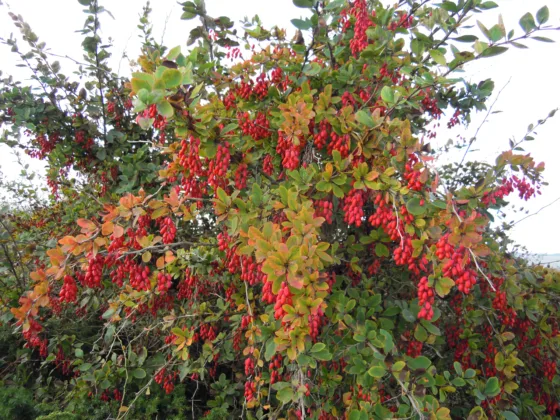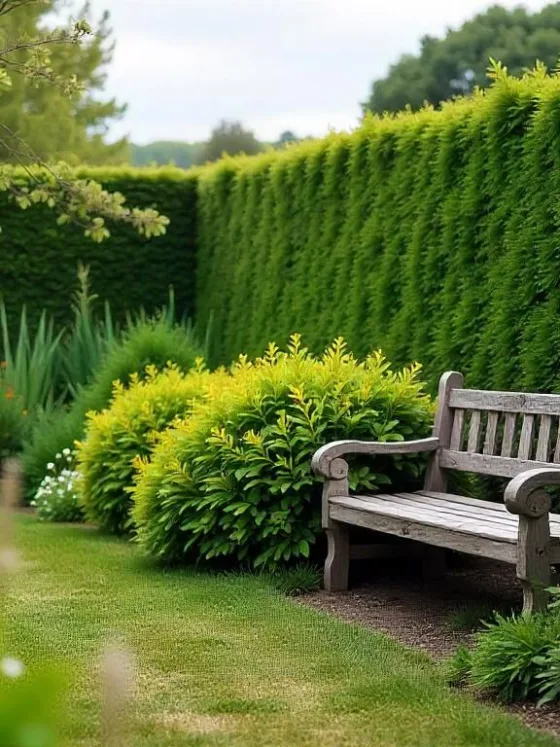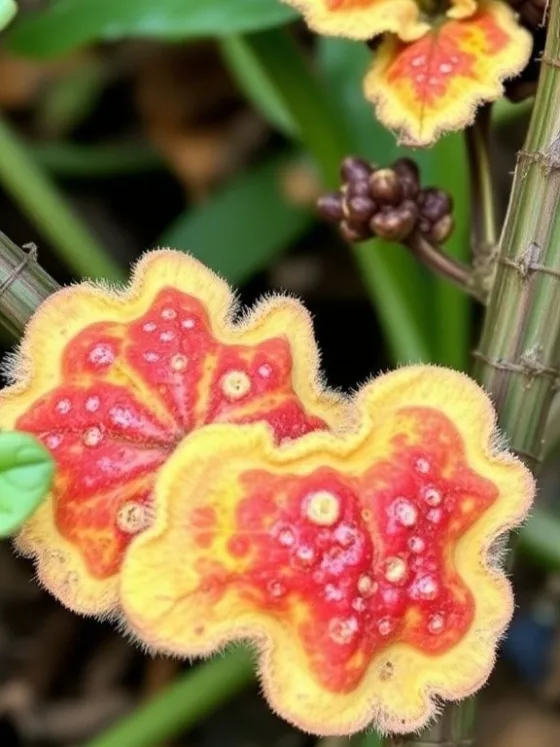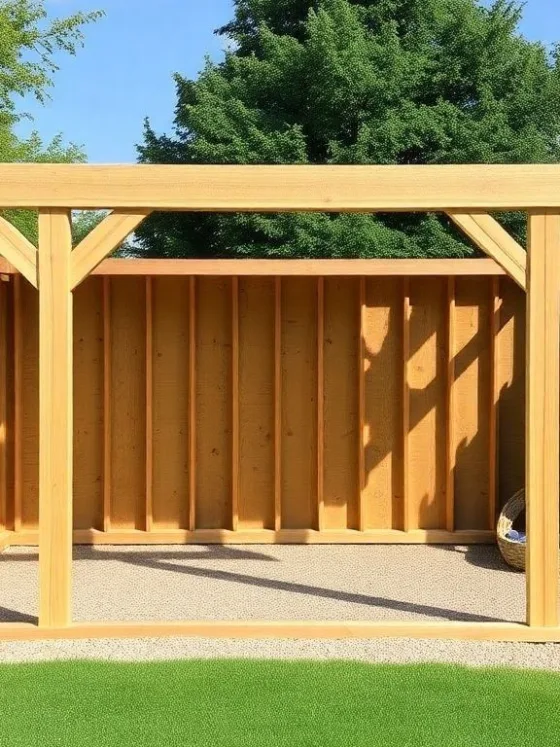Table of Contents Show
A rose for every garden. For many northern gardeners, that would have been just a dream over much of the past century, just one more reminder of the indignities they suffer living in a northern climate. But that is the case no more.

Today, “a rose for every garden” is nothing less than a statement of truth. Thanks to the tireless efforts of determined rose breeders in Canada and the northern United States, there truly is a hardy rose for every northern garden.
And I don’t just mean a token nod to the southern belles, those hybrid teas, floribundas, and grandifloras that once fed our collective envy, just to pacify our most passionate desires.
No, today’s hardy northern roses compete on an equal footing with their bourgeois cousins from warmer climates and are now even surpassing them in vigor, splendor, and class.
So enough waxing poetic for now; I think I’ve made my point. If you live in the North, roses are now an integral part of your gardening and landscaping palette. So let’s now look at these hardy northern roses that have emerged over the last few decades, and what it is about them that has made them so successful.
I think it’s appropriate to start with an examination of the finer attributes of roses in general, to give us a good benchmark from which we can examine the hardiest of the class. It’s no secret that roses are primarily grown for their flowers.
Synonymous with beauty and a symbol of love in so many diverse cultures, the flowers of the rose are the main reason they are welcomed into gardens and landscapes around the world.
There are many qualities by which rose flowers are categorized and measured, some of them quite subtle indeed. The number of petals, bloom count, color and tone, fragrance, and size are but a few by which the flowers of the finest roses are classified.
Likewise, they are defined by their flowering habits; clustered versus individual, single blooming versus repeat or even everblooming, single, semi-double, full, and double. And the list goes on…
It All Began Thousands of Years Ago

When discussing the blooms of the rose, a history lesson might help put into perspective just how far today’s roses have come from their distant ancestors.
In the wild, most rose flowers are naturally some shade of pink, fragrant, single, and have exactly 5 petals and a bright yellow center. They usually bloom around June and then form their hips (fruits) over the latter half of summer.
This is of course a generalization; a couple of fascinating varieties are naturally yellow, but that’s about all for their variation. Suffice it to say that hybrid teas simply don’t exist in nature of their own accord.
Over literally thousands of years, breeders have selected notable mutations in these basic species and made crosses between the species, and propagated these desirable plants primarily by vegetative means.
The result has been literally thousands of varieties with a phenomenal range of ornamental attributes that seem to grow in number with every passing year. But it is only in the past 50 years or so that developers started to select roses for hardiness together with these other desirable traits.
There are two ways that hardiness has been bred into today’s finest selections. The first was to use truly hardy roses as parents for new developments. Northerners know that there are a number of wild rose species that will grow right into Zone 1.
While not in and of themselves particularly ornamental, these species have provided the genes that imparted this hardiness to their hybrid offspring. Thus an efficacious cross between a hardy wild rose and a particularly showy white tea rose might result in hardy offspring with white tea-shaped flowers.

The second means for breeding hardiness into roses has been to develop and select roses that will regrow vigorously from the crown in a single season and produce abundant blooms on this new wood.
These roses are essentially treated as perennials, with the branches dying back to the crown (or the snow line) and vigorously recovering the following season to produce a showy display of flowers that rivals the finest of the hybrid teas.
Winter kill of the unprotected branches is no longer an impediment to performance; just trim off the dead parts in spring and wait for the show to begin!
But a word of caution is in order here. Up until the last decade or two, most roses were propagated by budding or grafting onto a hardy rootstock. This means that the roots and much of the crown are not actually the desired rose variety that will produce the flowers above ground, but rather a variety selected for its crown hardiness and ability to be mass-produced.
As a result, if the part of the plant above the bud or graft union dies and new growth emerges from the crown or roots, it’s likely that the rootstock variety is what will come up, and this is usually anything but what the gardener desires in their garden.
Thankfully, in the past few decades, new vegetative propagation techniques such as tissue culture and propagation by cuttings have been embraced by the horticultural industry. With these methods of propagation, the rootstock is identical to the above-ground plant, meaning that if the stems and canes die, it’s still the desired variety that will regrow from the roots and crown.
So if you want to be certain that your rose will grow true from the crown, or if you know for a fact that the variety you are planting will likely be surviving your winters to regrow from the crown the following season, you are best off making sure that you purchase roses that have been propagated by one of these two means.
From a garden and landscape design perspective, the flowering period is particularly important and worthy of further investigation. Most wild roses naturally bloom in June. Many of the so-called species roses and a number of cultivars have retained this characteristic, and are referred to as “non-recurrent” bloomers.
Some gardeners consider this a negative trait, but many of these plants put their all into this one performance, a spectacle that most of the repeat bloomers will never match at any point in the season.
Some varieties have been bred to produce a second flush of flowers in mid-summer; these are referred to as “recurrent” bloomers. This second wave of bloom may or may not be as showy as the June performance, but it does extend the season and provide color at a time when other shrubs are no longer contributing to the flowering performance.
Finally, roses that are referred to as “everblooming” tend to produce wave after wave of flowers from June through to frost, seeming to some degree like they never stop blooming. In truth, they produce multiple flushes which overlap, and at any given point in the season may have a mass of flowers or no flowers at all.
Read Also:
Much More Than Just Flowers

Rose flowers are certainly beautiful. But there are other noteworthy ornamental attributes of roses than just the flowers, as the most astute garden designers have realized for years. If left to their own devices, most rose flowers will go on to produce fruits, which are known as “rose hips”.
These are often very ornamental in the fall landscape, in colors of orange and red that complement the autumn motif. Note that not all cultivars will produce hips, as the flowers of many varieties are actually sterile.
Another particularly ornamental attribute is the foliage. Many varieties have glossy green or deep green foliage that adds to the overall effect. In fact, since red and green are contrasting colors, certain varieties will display their flowers with added emphasis against the contrasting foliage.
Other varieties have reddish or bronze-tinted foliage, which imparts additional color to the landscape when the flowers are not dominating the show. And some varieties have exceptional fall colors, especially the rugosa roses (Rosa rugosa).
The habits of the plants themselves are also particularly important from a design perspective. Many gardeners have relegated roses to the traditional flower bed to play their part in the overall flowering performance of the garden, but they are so much more versatile than this.
Roses are tough, many of them tough enough to tolerate the dirt and grime of sidewalks and driveways, or to serve as flowering groundcovers for sunny areas of the yard. Some will climb structures such as arbors and trellises, while others will grow tall enough to be used as accents or in hedges.
The great news is that the many varieties comprising today’s hardy northern roses cover the full gambit of all these attributes and functions. Colors range from blood red through cherry red and hot pink to soft ivory and into shades of yellow and lemon.
There are white roses and scarlet roses and purple roses. They are single, double, and as full as the finest grandifloras. Fragrances vary from none to sweet and heady. There are hardy groundcover roses, climbers, pavement roses, and shrub roses. There truly is a rose for every northern garden!
Now that you know all about these hardy northern roses, let’s look at some of the specific series and varieties that you might consider inviting into your garden.
Parkland Series
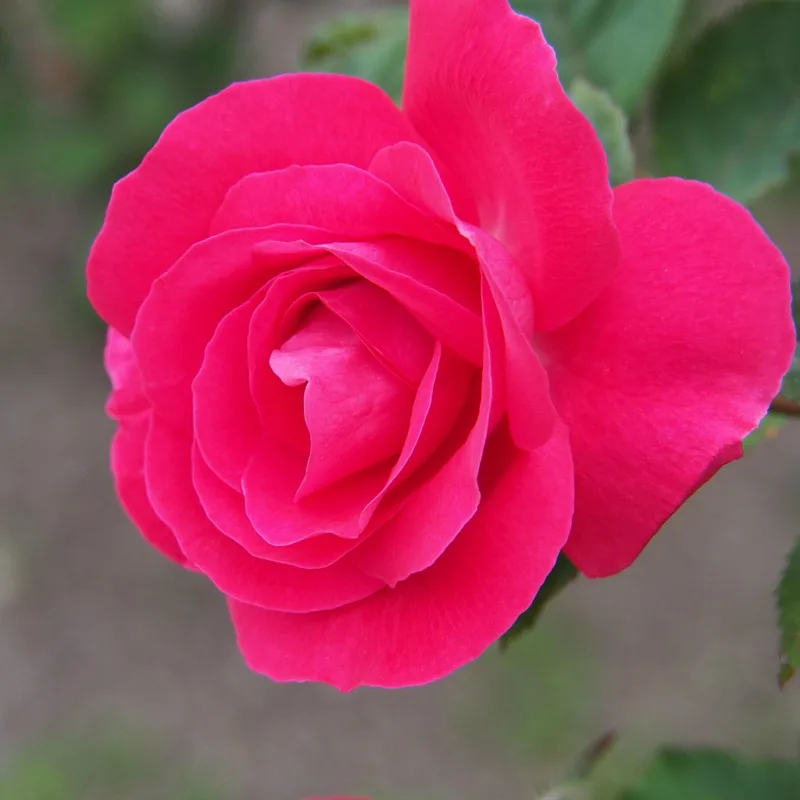
When it comes to tough but beautiful roses, look no further than the Parkland series. These were developed by the Agriculture Canada Research Station at Morden, Manitoba, in the harsh environment of a zone 3 prairie winter. Any roses that thrive in this climate must be tough!
The challenge was to create a range of garden roses that would reliably survive winters in zones 2 and 3, returning each spring to provide abundant flowers in a range of colors. It was a tall order, but the results have been stunning and have really set the standard for hardy roses!
It all began with some relatively modest but very hardy introductions back in the 1970s. Most of these developments were a result of crosses between the rugosa rose (Rosa rugosa) or the prairie rose (Rosa arkansana) and other hardy roses.
They get their hardiness, ruggedness, and disease resistance from their rugosa and prairie rose parentage, and a wide range of colors, flower forms, and habits from their less-hardy parents.
Since that time, ongoing developments have resulted in newer introductions with prolonged bloom periods (including many “everblooming” roses), more colors, flower types, and improved disease resistance.
It’s worth noting that many of the newer introductions are significant improvements over the older ones, and should replace them. So where Morden Centennial used to be one of the most popular of this series with its copious pink flowers, it has been replaced by Morden Belle with an improved habit and disease resistance.
Likewise, the bright red Adelaide Hoodless and Morden Cardinette have been replaced by velvety red Cuthbert Grant and blood-red Hope For Humanity.
There are a few notables in this series that will stand up on close inspection to the finest tea roses. Morden Blush is the showcase rose here, with truly tea-shaped flowers in a soft ivory pink and a subtle tea fragrance.
If you want a hardy tea-rose equivalent in your northern garden, definitely give this one a try – it will win awards! For those who think they can’t grow roses or who don’t have the time to give them any TLC at all, let me recommend Winnipeg Parks.
From my experience, it is virtually indestructible, with very showy cherry-red flowers all season and stunning reddish-tinged foliage.
The most intriguing introduction is Morden Fireglow, with flowers of a color that’s actually quite hard to describe. It’s like the hottest scarlet you can imagine, with the rich orange hue really shining through.
And the most exciting new introduction has to be Morden Sunrise, which will be a showpiece in any garden with its bicolor flowers which open bright golden orange and fade to a combination of lemon yellow and apricot pink, not to mention its very glossy green leaves.
Explorer

The Explorer series of hardy roses were developed at Agriculture Canada’s Central Experiment Station in Ottawa around the same time as the Parklands were being developed in Manitoba.
The objective was to develop a series of functional and very hardy roses that would stand up to the finest teas, floribundas, and grandifloras on the market. The varieties were named in honor of famous Canadian explorers from bygone eras, and the results were spectacular.
Many of the Explorer roses were developed using either Rosa rugosa or Rosa kordesii as the parents, both very hardy species. These were crossed with showy but less hardy varieties to produce an impressive range of roses with exceptional hardiness and vigor.
As with the Parklands, the earlier introductions, while trendsetting at the time, have since been replaced with newer introductions that retain the same hardiness and tenacity but exhibit better disease resistance and ornamental attributes.
While the Parkland roses represent some of the best in class for garden applications, the Explorer series has produced some of the finest roses for specific landscape applications.
William Baffin has to be the finest of the hardy climbers, producing abundant strawberry pink flowers on strong arching canes which will twine nicely up a tall trellis to a height of nearly 10′. Other notable climbers include Henry Kelsey with red flowers, Quadra with deep red flowers, and John Davis with fragrant pink flowers.
Explorers are not to be outdone for color. Henry Hudson is renowned for a plentitude of ivory-white flowers, Champlain is an everbloomer with rich velvet red flowers, and the new J.P. Connell features intensely fragrant flowers in a soft lemon yellow.
And Explorers have some of the most fragrant hardy repeat bloomers on the market, particularly the recurrent bloomer David Thompson with its intense, heady fragrance emanating from medium red flowers.
Easy Elegance

The “new kids on the block” come courtesy of Bailey Nurseries in St. Paul, MN. Their resident and internationally renowned rose breeding expert Dr. Ping Lim has scoured the globe looking for hardy roses to use in his breeding programs, and the results are now being introduced as the “Easy Elegance” series of roses.
The press on these is that they are easy to grow and are relatively trouble-free. Independent trials are still underway to validate these claims, but so far the results look promising.
Most roses in this series are hardy to Zone 4, with some definitely worthy of trial in Zone 3 sites. There are actually four “sub-series” of roses in this group, subjected into lower growing groundcover roses, bicolored repeat bloomers for garden impact, roses bred to look like the hybrid teas, and a rugged hardy set of roses for those who think they can’t grow roses, period.
We are aware of some trials in Zone 3 that have tested a number of these introductions under extremely harsh conditions, and the results are in. If you’re looking for the hardiest of the bunch, try out my favorite, Sunrise Sunset, a bicolor rose with fuchsia pink petals that blend to apricot yellow near the centers. It’s a groundcover introduction that is suited to mass plantings.
Yellow Submarine is a tea-type rose which has clusters of fragrant bright lemon-yellow flowers that fade to white, giving a range of yellow tones on each plant. It’s a great choice for use as a garden accent. And My Hero is a self-cleaning trouble-free rose that lives up to its billing, with bright red blooms which turn a rich pink as they age.
There are numerous others in the series, including soon-to-be-popular varieties like Mystic Fairy (double red), Tahitian Moon (double yellow), and Grandma’s Blessing (double pink). There’s no doubt that a number of these will prove their worth in the coming years and become staples in northern gardens.
Old Fashioned Shrub Roses
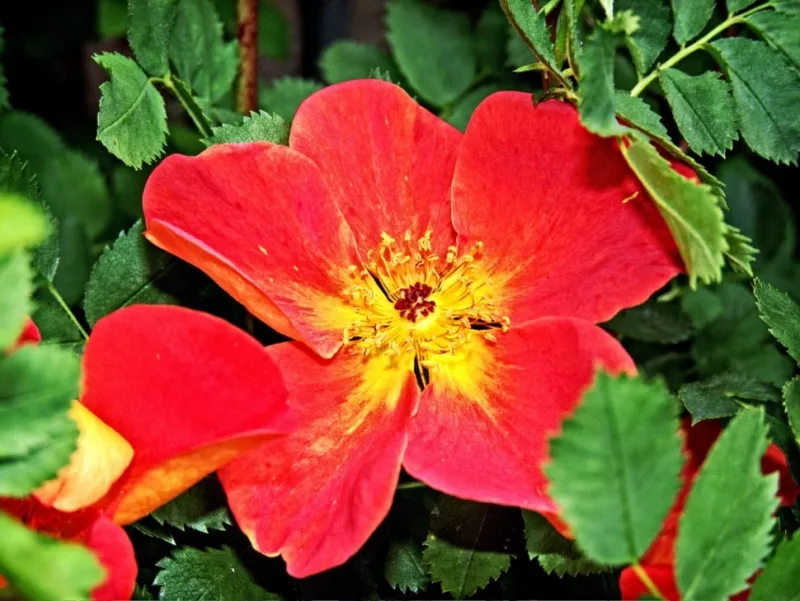
Even though the world of northern roses has undergone this amazing transformation in the past couple of decades, it’s surprising that a number of die-hard standbys are experiencing a resurgence in northern gardens. And there’s a story behind this renaissance.
You see, as the developers were breeding hardier roses with selected attributes like extended flowering seasons, fascinating colors, or disease resistance, a number of other attributes were being removed from the gene pool. For example, it’s hard to find a highly fragrant new age rose, with a few notable exceptions.
Likewise, the quest for tea rose-like flowers has sacrificed the one-shot massive bloom impact that is so characteristic of many shrub roses in late spring and early summer.
That’s why for these specific characteristics, some of the older shrub roses have made their way back into northern nurseries.
If you want a rose that pours its heart into a single coup de grace performance and you don’t care about the rest of the year, you’ll be looking to shrub roses like Hansa, an incredibly hardy rugosa rose with crimson flowers followed by scarlet hips. If you desire overwhelming fragrance above all else, you’ll be looking at a shrub rose like Therese Bugnet.
For overwhelming yellow flowers, there’s Harrison’s Yellow rose. A stunning bicolor selection is the Austrian Copper rose (Rosa foetida ‘Bicolor’).
If it’s stunning red foliage all season long that you seek, you’ll cherish the redleaf rose (Rosa rubrifolia). And if ornamental rose hips in fall are what you seek, look no further than rugose rose. All of these selections are very hardy and easy to grow
Other Hardy Series

There are newer introductions out there that are hardy in zones 4 and 5 and worthy of further use. The Meidiland roses were developed in Germany, and are characterized by flowers that, though individually small, are produced in such abundance and carried above the foliage in such a way as to smother the plant in color.
These everbloomers include varieties such as Pink, Red, White, and Scarlet Meidiland, all of which are hardy in zone 4 with protection.
The “Buck” series was developed in Iowa by Dr. Griffith Buck by crossing showy hybrid teas with Rosa laxa and Rosa spinosissima.
They are renowned for their flowering habits that rival any of the hybrid teas, including the highly popular Carefree Beauty, an everbloomer with slightly fragrant pink blossoms, and Prairie Sunset with full apricot yellow flowers. Both of these are hardy in zone 4.


